Exquisite Caramel with Salted Butter Recipe
Rediscover a superior quality delicacy.
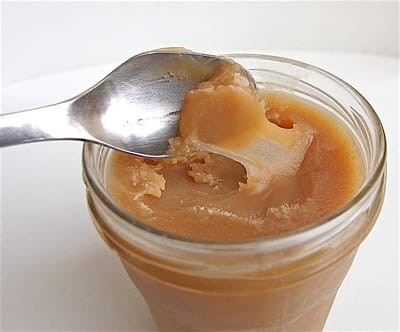
Caramel with Salted Butter
The recipe is easy to make. There is no need to be afraid of missing your caramel or burning it, it will not happen. This cream is perfect for filling pastries, macaroons, choux pastry, puff pastry, or for spreading on toast and, ideally, on a hot pancake. The salted butter caramel is excellent and of superior quality. Guaranteed success among gourmets. Everything is detailed so that you will succeed on the first try.
Ingredients for a 340 g jar of preserve:
- 175 g blond cane sugar to be ground into small grains (about 15 seconds in a blender/chopper),
- 125 g quality salted butter with taste (if you have sweet butter, you will add salt),
- 80 to 100 g liquid full cream *,
- 1 g fine salt, or 4 g (1 1/3 teaspoon) if the butter is soft,
- 15 ml water (1 tablespoon).
* The texture of salted butter caramel is as hard as cold butter out of the refrigerator. At room temperature, it still remains firm and holds up well as a filling in pastries. If you prefer to use it as a spread, add more cream (100 g instead of 80 g) to make it softer. The salted butter caramel softens on contact with heat.
Course of the recipe:
The jar and lid are sterilized with boiling water filled to the brim.
Heat the cream in a saucepan or in the microwave at about 80°, without boiling it, and set it aside.
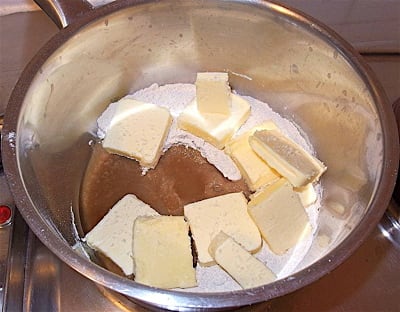
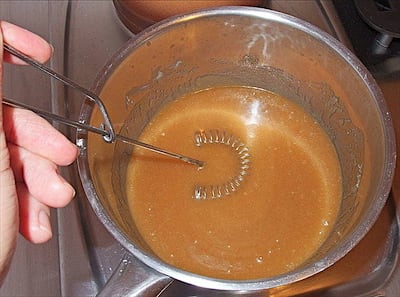
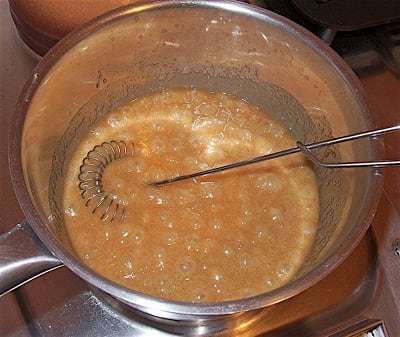
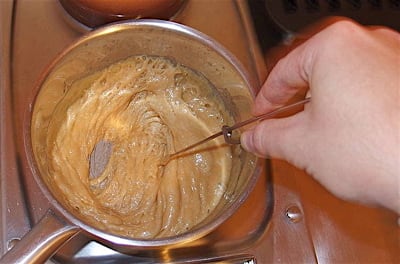
In a small thick-bottomed saucepan, put the sugar, the chopped butter, the fine salt and the dash of water, just to start moistening the sugar. Start cold, do not pour the ingredients into the hot pan. Melt over medium/hot (7/10) or even hot (8/10) heat for the first 2 minutes, and stir with a whisk or spatula, slowly for several minutes. The melting temperature of the caramel sugar should be between 160 and 170°, which may take a few minutes. During the mixing, the sugar and butter will bubble and become sticky, i.e., the texture will become firmer. Never stop stirring.
When the colour begins to darken slightly to amber hues, remove the pan from the heat. The sugar forms into caramel. Off the hotplate, gradually add the hot cream. Beware of splashes, as there is a large temperature difference between the hot cream and the burning caramel mixture, this will create steam and splashes. Keep stirring until there are no more bubbles (the water in the cream must evaporate). To do this, you can put the saucepan on medium heat (5/10) and keep stirring until there are fewer bubbles (no more than 2 minutes).
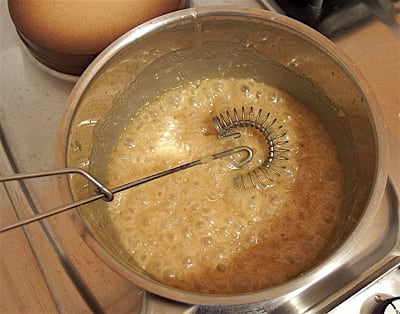
If after more than 5 minutes, the liquid fat in the butter separates from the cream, it is too late, you should put the pan on a slightly higher heat to form the caramel. Continue stirring anyway until it turns brown, you can remedy for this when you incorporate the cream.
If, after adding the liquid cream, small sugar lumps are found, place the pan back over medium heat (5/10) to warm and liquefy the caramel. Whatever happens, never stop stirring.
Pour the mixture into the sterilized jar. Once the jar has cooled to room temperature, keep it in the refrigerator to taste it the next day (the cream will solidify and develop its flavours).
The salted butter caramel can be kept for 3 months in the refrigerator in the vegetable or egg container, the least cool compartment, to allow it to still be a little soft.
after Valérie Guedj cestmafournee.com.
“If-” you'll be a Man…
Re-discover Rudyard Kipling's famous poem “If- you'll be a Man, my son” which has inspired so many generations. It celebrates the courage to overcome hardship.
I've decided to succeed
I have put together 10 tried and tested tips for finding the will to successfully achieve your ambitions and overcome obstacles in your personal and professional life.
Gourmet treats
Exquisite recipes for mini-cakes (madeleines, financiers, biscuits, cakes, muffins) and other delicacies (croissants, brioche, traditional cakes…).